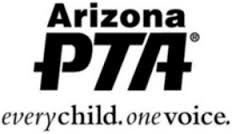Nonsectarian Policy
PTA welcomes into membership people representing a diversity of cultures, ethnic backgrounds, and political and religious beliefs. The purposes of the PTA acknowledge the importance of a spiritual life in the development of children and youth. As an association, PTA has the right to offer inspirational messages to open or close its meetings, but such messages by PTA leaders or invited religious leaders should be inspirational rather than sectarian, recognizing that in this pluralistic nation not all members share the same beliefs. Poetry, quotations from great men and women, uplifting anecdotes, and moments of quiet meditation can be used.
Diversity and Inclusion Policy
PTAs everywhere must understand and embrace the uniqueness of all individuals, appreciating that each contributes a diversity of views, experiences, cultural heritage/traditions, skills/abilities, values and preferences. When PTAs respect differences yet acknowledge shared commonalities uniting their communities, and then develop meaningful priorities based upon their knowledge, they genuinely represent their communities. When PTAs represent their communities, they gain strength and effectiveness through increased volunteer and resource support.
The recognition of diversity within organizations is valuing differences and similarities in people through actions and accountability. These differences and similarities include age, ethnicity, language and culture, economic status, educational background, gender, geographic location, marital status, mental ability, national origin, organizational position and tenure, parental status, physical ability, political philosophy, race, religion, sexual orientation, and work experience.
Therefore PTAs at every level must:
- Openly assess beliefs and practices to assure inclusiveness and guard against discrimination;
- Make every effort to create a PTA board and membership that is inclusive and reflective of its community;
- Encourage that all PTA activities at the school be planned by a committee which is representative of the population
